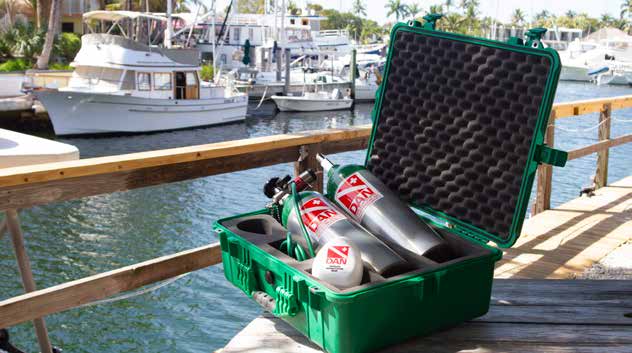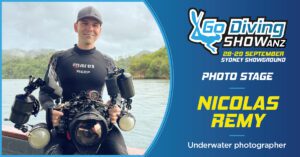
DAN WORLD – 10 Things You Might Not Know About Decompression Illness (DCI)
Remember that the term decompression illness (DCI) includes both decompression sickness (DCS) resulting from dissolved nitrogen (or another inert gas) being eliminated from a diver’s body tissues; and arterial gas embolism (AGE) which is caused by air entering the arterial blood because of a burst lung.
1. DCI was first reported in 1667 in a snake – not a diver!
Boyle (from Boyle’s Law) placed a viper in a vacuum and noticed a bubble forming in its eye.
- It’s possible to get a burst lung and subsequent DCI (arterial gas embolism) in as little as 1.2 m of water.
If a diver fills his lungs with compressed air and surfaces without exhaling, there is enough pressure change in the first 1.2 m from the surface to over-expand the lungs sufficiently to cause a tear.
- Divers have suffered from DCS after ascending from depths as shallow as about 6-7 m.
It used to be thought that one had to dive deeper than 10m before DCS was a risk, but this is now known to be untrue.

- Most divers (possibly around 90%) who get DCI have been diving within the limits of their dive computer or tables.
However, the risk of DCI increases when a diver exceeds these limits. This indicates that the limits cannot accurately account for individual differences between divers and the various factors that can influence nitrogen uptake and elimination during a dive. All divers should add conservatism to their decompression calculations, especially is the diving is purely recreational and dive time doesn’t need to be maximised.
- Bubbles form within divers’ bodies during or after many dives, especially repetitive and deeper dives.
These bubbles can be detected using ultrasound and usually do not cause symptoms. Some divers “bubble” more than others. A slow ascent rate and doing a safety stop reduces the amount of bubbling and therefore the risk of DCI.
- Some divers are more susceptible to DCI than others.
Divers with a patent foramen ovale (PFO),which is a common heart defect that can enable blood to flow across the heart, have a significantly higher risk of DCI (sometimes quoted as 2 to 8 times, depending on the size of the hole). Other factors such as being overweight, increasing age, lack of fitness and dehydration may also play a role although there is little hard evidence to support some of these beliefs.
- A mottled reddish/purple/bluish rash is an increasingly common sign of DCI and is often associated with the presence of a PFO.
Skin-related DCI used to be relatively uncommon in recreational divers. However, over more recent years it has become far more common. Part of the reason for this could be the result of the more frequent and longer dives and shorter surface intervals enabled by dive computers.

- Oxygen first aid is often delayed, given using unsuitable equipment and for too short a period.
Good oxygen first aid is very important in the management of DCI and this is often poorly done. To maximise the benefit, near-100% oxygen should be given from the time symptoms first occur, and continued until a diving doctor advises that it be stopped.
- Many dive operators in remote areas do not have access to a sufficient supply of oxygen to last until an injured diver receives appropriate medical care.
It can sometimes take over 24 hours for an evacuation team to reach some remote locations so a large supply of oxygen is required. Check this out before you go on a dive trip to an area without good access to suitable medical care.
- About 120-150 divers are treated for DCI in Australia each
JOIN DAN WORLD
The DAN Emergency Hotline remains in operation 24/7. If you experience an emergency, call the hotline at +1 (919) 684-9111.
DAN World’s Membership Team is available Monday through Friday, 9.00am – 5:00pm AEST. For questions, please call +61 3 9886 9166 or email infoap@DAN.org.
Article by John Lippmann, Chairman & CEO of the Australasian Diving Safety Foundation on behalf of DAN World
Photo Credit: DAN World








